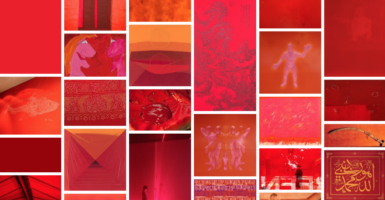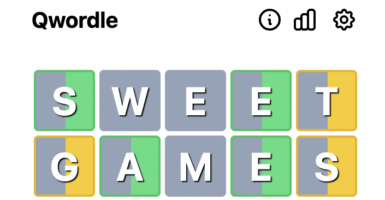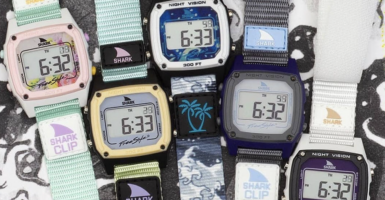Looking Back At Groovy 1970s Fashion Trends
Anyone who lived through the 1970s can attest to the fact that it was a tumultuous decade — one that started with the echo effect of the ’60s counterculture movement and disillusionment over the war in Vietnam, and ended with the oil crisis and the glitz and glam of the disco era.
Fashion of the era reflected these cultural shifts, as the ’70s saw clothing influenced by not just the hippie and disco movements, but also the early stirrings of the punk counterculture that would emerge in the ’80s. Let’s explore this vibrant, turbulent decade in fashion.
Early in the ’70s, the hippie aesthetic prevailed.

Hippies tend to be associated with the 1960s, and indeed, this was the peak of the movement’s cultural influence — but the hippie ethos and sense of style persisted into the 1970s as well.
The natural fabrics, handmade or thrifted clothing, and relaxed fits of hippie fashion were firmly in the mainstream in the early ’70s, but fashion trends would soon change.
Traditional style still had a place.
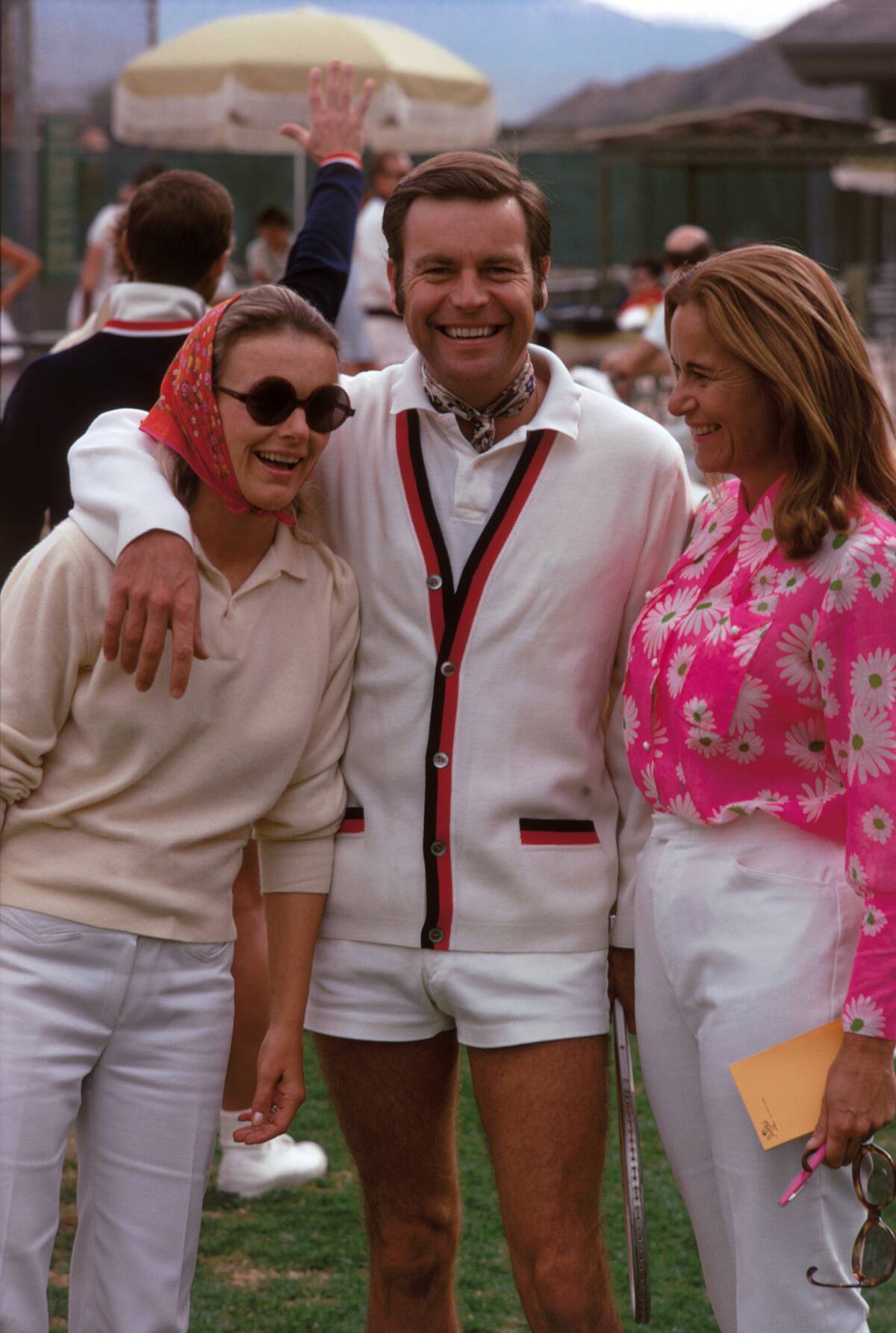
This photo of movie star Robert Wagner was snapped in January of 1970, right at the dawn of the decade. In a sharp contrast to the free-spirited hippie style, Wagner and his friends can be seen wearing what could be described as a preppy, country club style.
Cable-knit sweaters layered over polo shirts, as seen on Wagner, made for a relatively timeless look — one that had existed for decades, and one that continues to the current day.
Pants started to take on a new look.
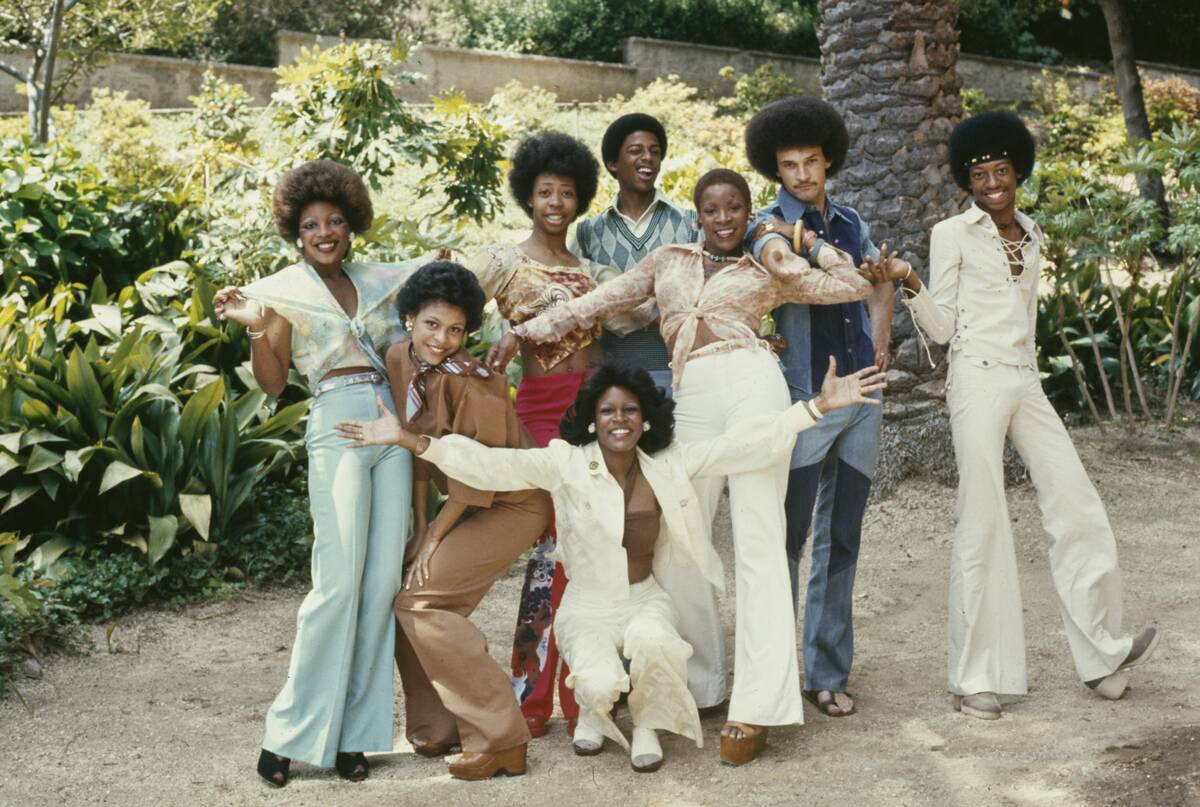
One of the most immediately recognizable fashion trends of the ’70s was bell-bottomed pants, which could be seen across a wide range of scenes, from hippie drum circles to disco nightclubs.
As the decade wore on, bell bottoms would be supplemented with wide-collared shirts, halter tops, and a glitzy array of glitter and sequins that would sparkle under the nightclub lights.
Punk fashion got its start.
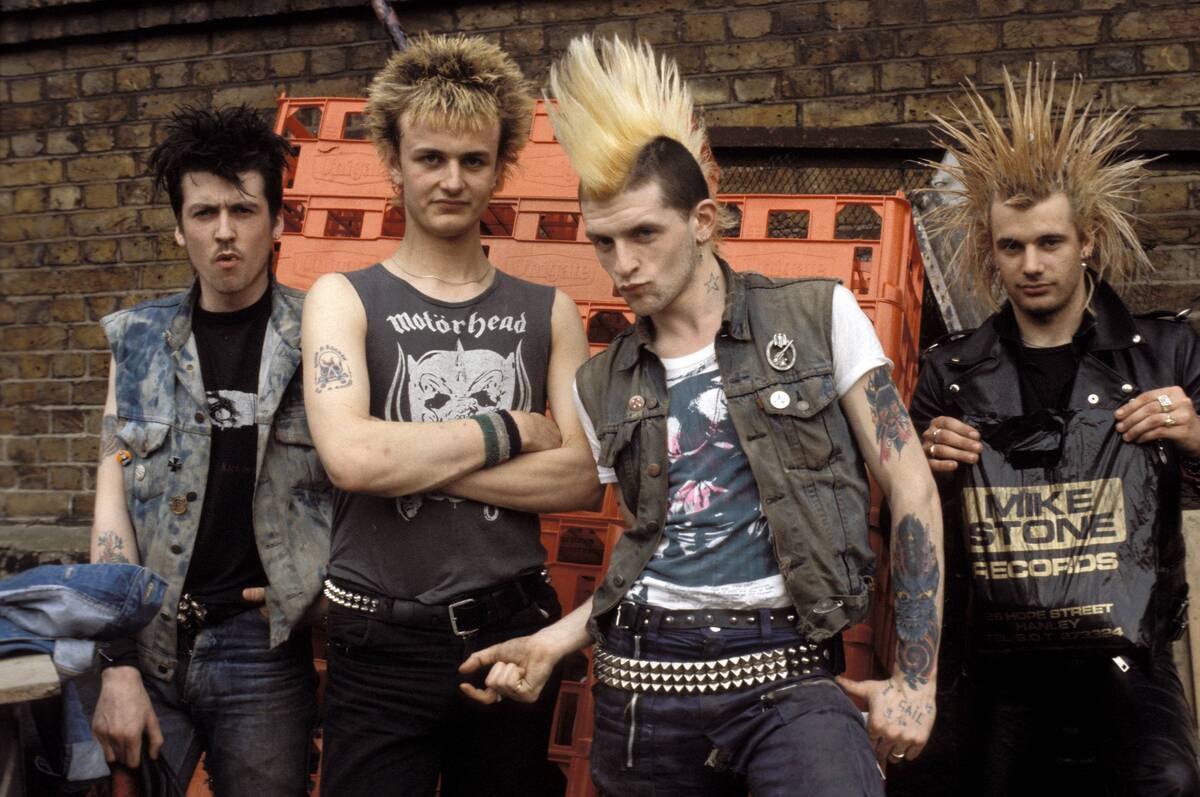
The quintessential image of punks, with spiked mohawks, spiked vests, and ripped clothing held together with safety pins, was born in the mid-to-late 1970s as early punk bands like the Sex Pistols and The Ramones grew in popularity.
While the punk aesthetic shares very few similarities with the hippie look, at least on the surface, both had at least one thing in common: A DIY ethos that challenged societal norms.
Hip hop fashion started to emerge.
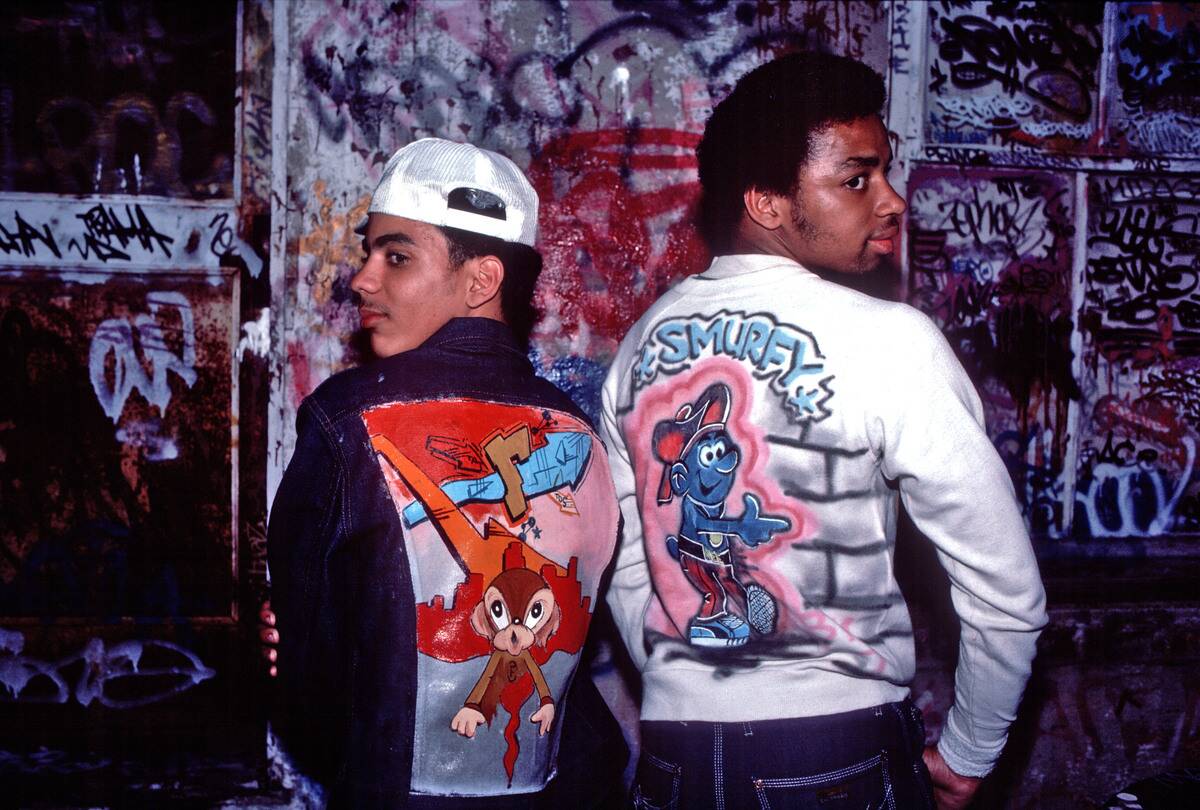
It’s safe to say that rap and hip-hop music barely existed in the 1970s, as the Sugarhill Gang’s “Rapper’s Delight” was released just three months before the end of the decade.
That said, the street style associated with New York’s hip-hop scene had been incubating for some time before it went mainstream. Kangol hats, Adidas tracksuits, gold chains, and graffiti-influenced designs were the order of the day.
Men’s suits were traditional, with a twist.
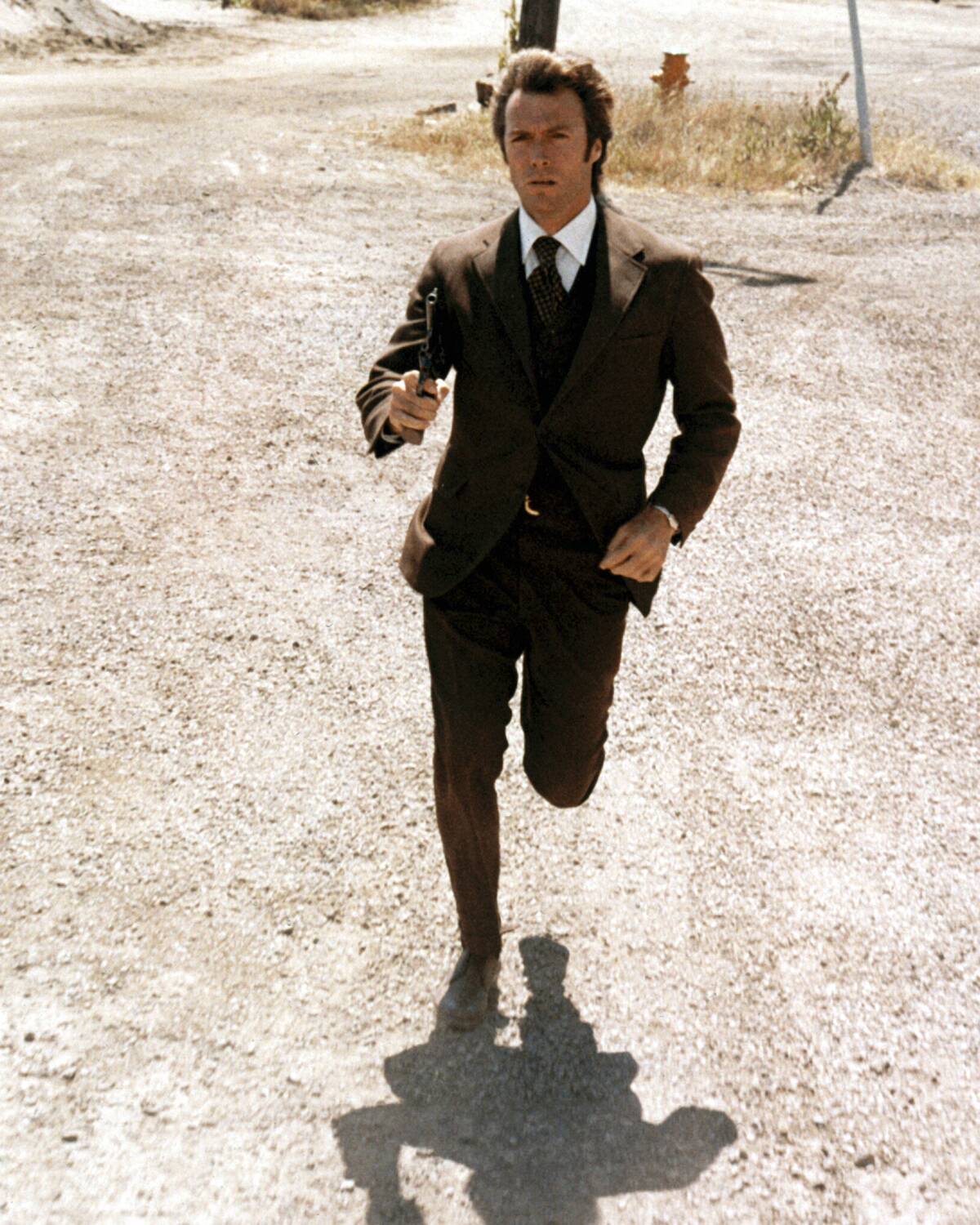
Men’s suits have consisted of the same basic elements — dress shirt and pants, tie, and blazer — for decades, but the fit and styling of these components have varied over the years.
This still of Clint Eastwood in the 1971 film Dirty Harry shows the direction that menswear was moving in at the time: Wide lapels, flared pants, and large shirt collars. Some of these elements were incorporated into the disco jumpsuits that emerged later in the decade.
It was a colorful decade.
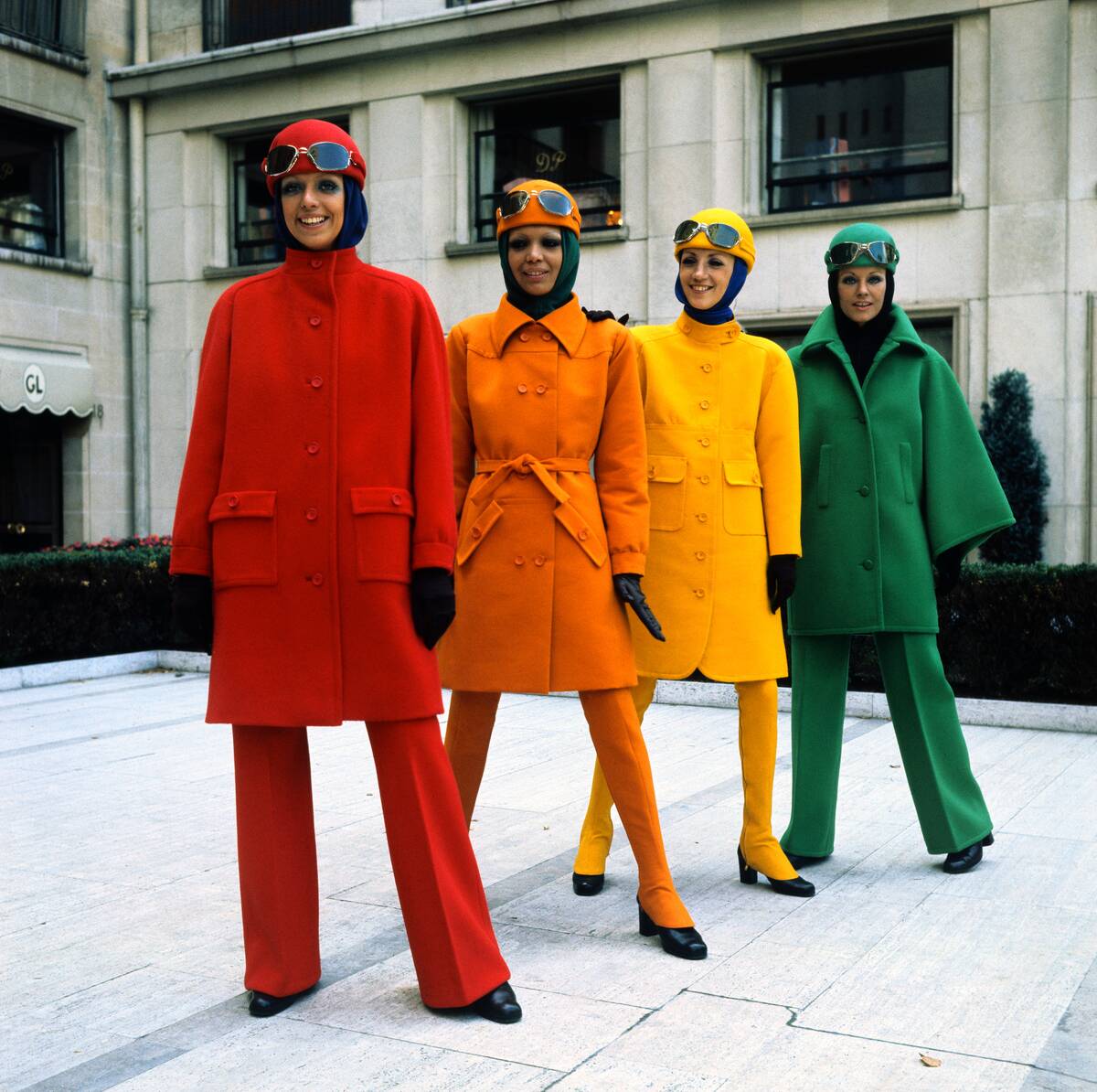
Thanks to new synthetic fabrics, clothes could hold vibrant colors better than ever by the 1970s, and fashion designers were quick to capitalize on this colorful trend.
The psychedelic patterns and designs that were popular in the ’60s were gradually simplified into simple color-block designs or simply outfits that were rendered in a single bold color.
Turtlenecks made a comeback.
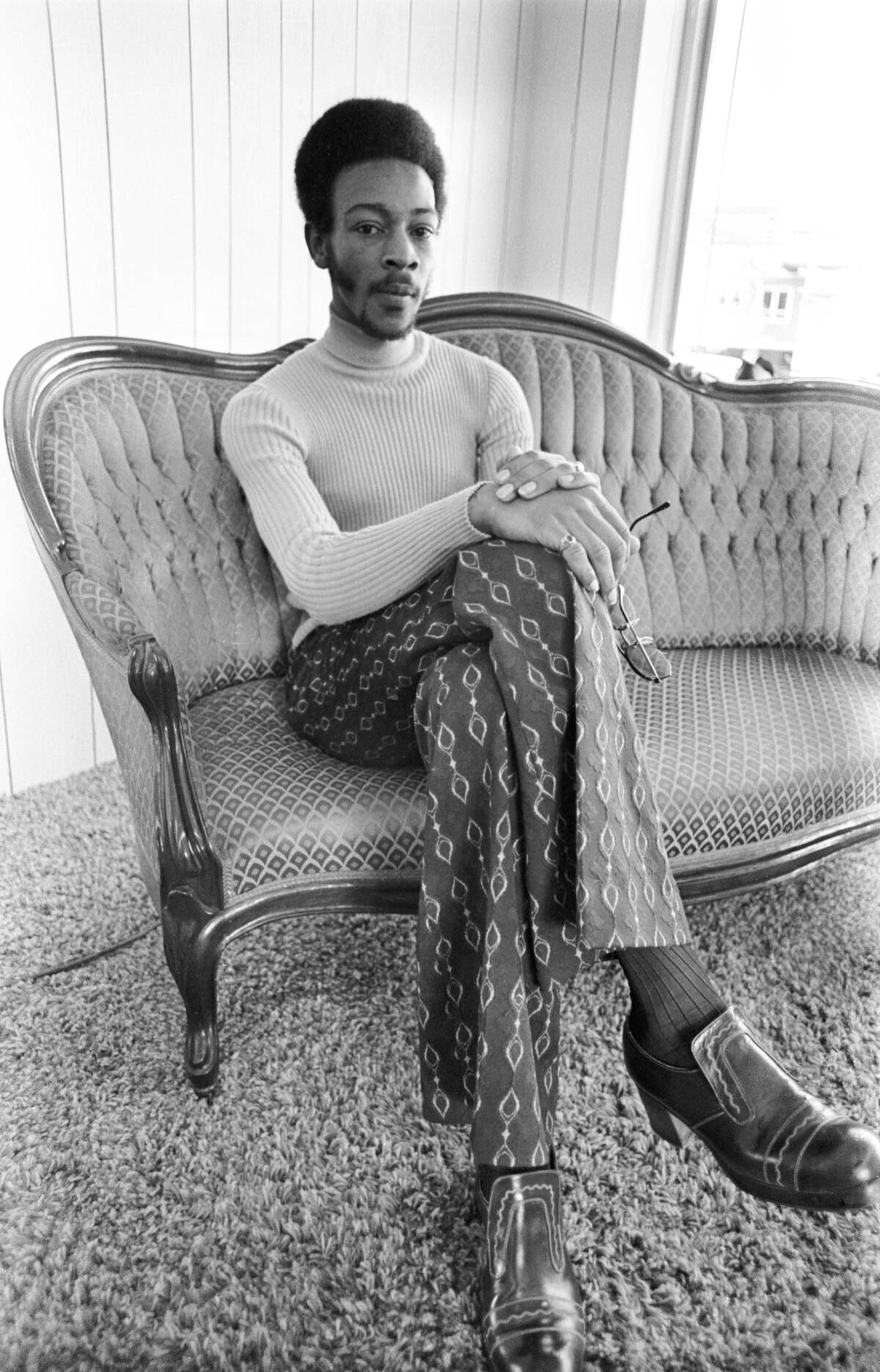
This image of a Georgia shoe salesman in 1975 gives us an idea of what a stylish man in the mid-’70s would wear. Flared pants were the order of the day, while his slim-cut, cable-knit turtleneck shows a different trend that emerged during the decade.
Celebrities like Steve McQueen, Miles Davis, and Robert Redford helped to popularize the turtleneck look, which experienced a resurgence in the ’70s.
Day-to-day fashion was influenced by the ’60s.
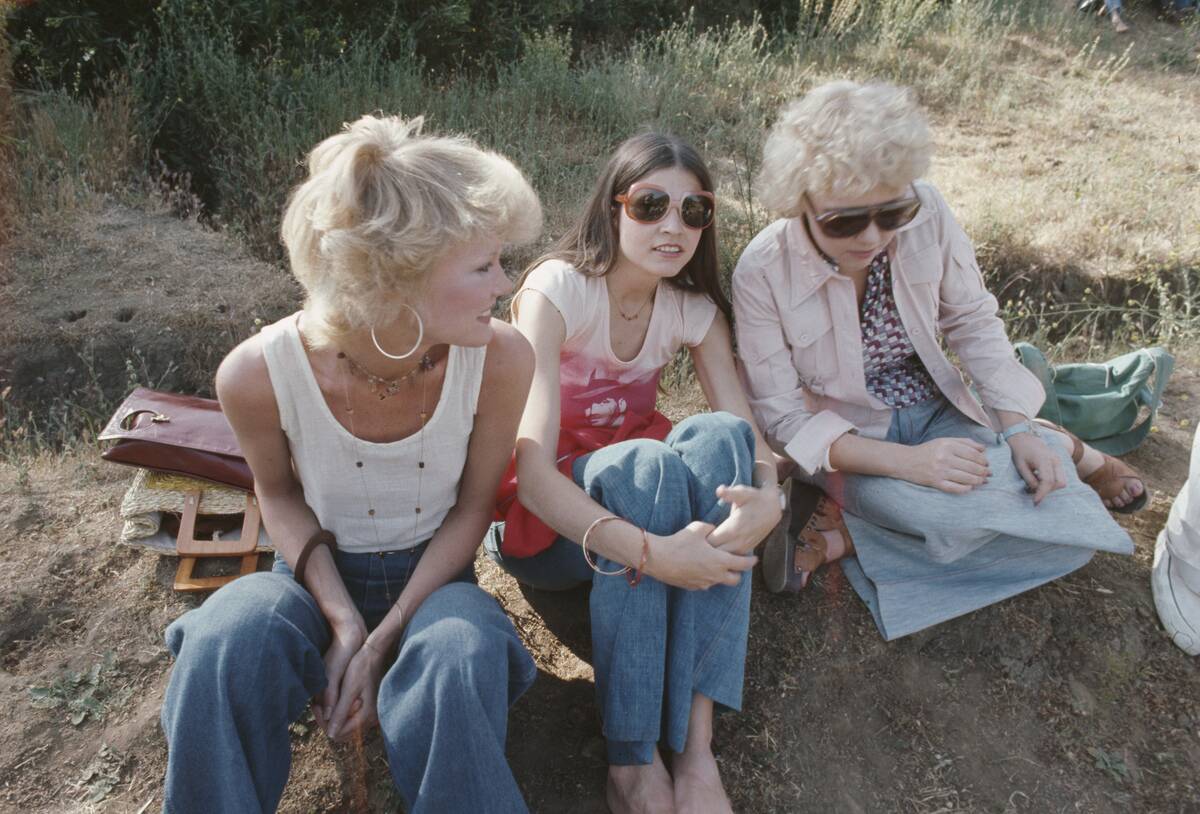
This 1975 photo shows what three typical young women of the era wore on a warm summer day. Their casual style is clearly influenced by the mod and hippie trends of the prior decade, with casual shirts and loose-fitting jeans.
Women of the ’70s also favored flowing maxi skirts and peasant blouses, with bell-bottomed jeans remaining popular.
Glam rock was another influence.
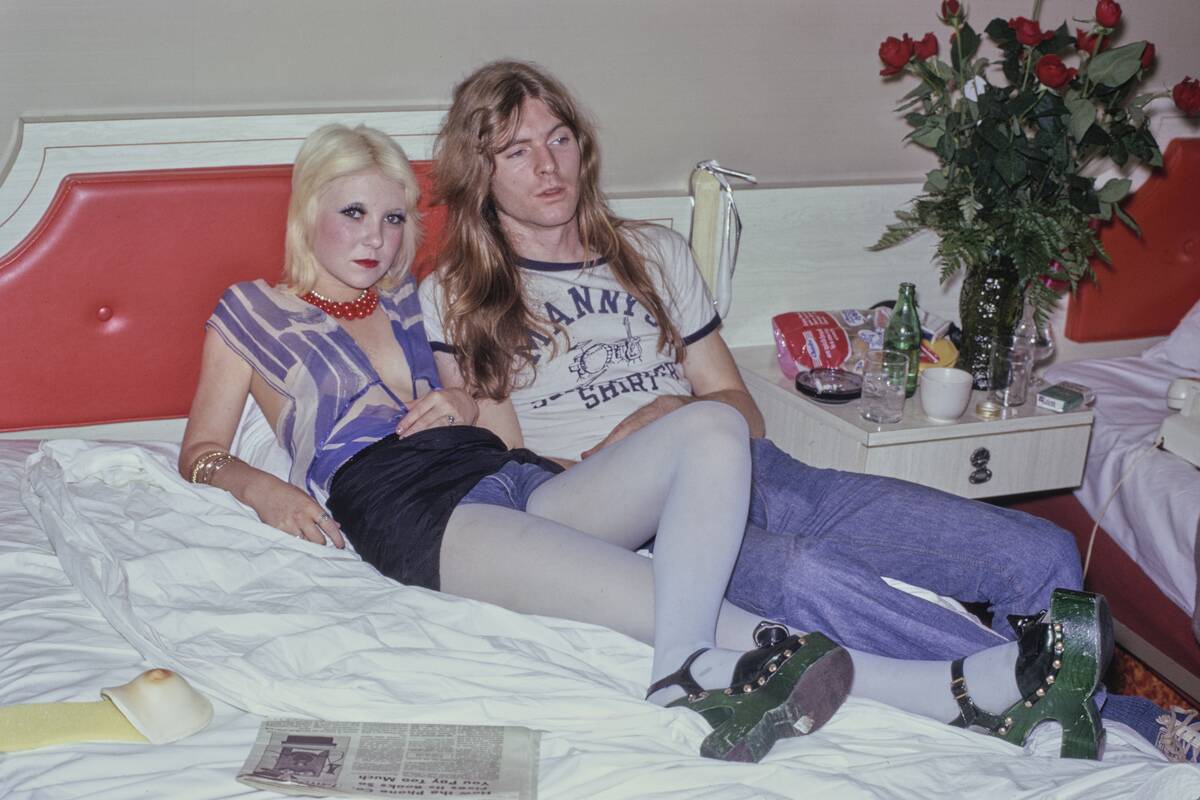
There’s little information on who these people are — the caption refers to “Caroline with a roadie” — but while the two people in this photo look the worse for wear, they’re wearing some quintessentially glam outfits.
Both men and women embraced an androgynous look, with tight pants and shirts, along with bold colors. Styles would become even more experimental in the early ’80s.
The Whisky was the place to be.
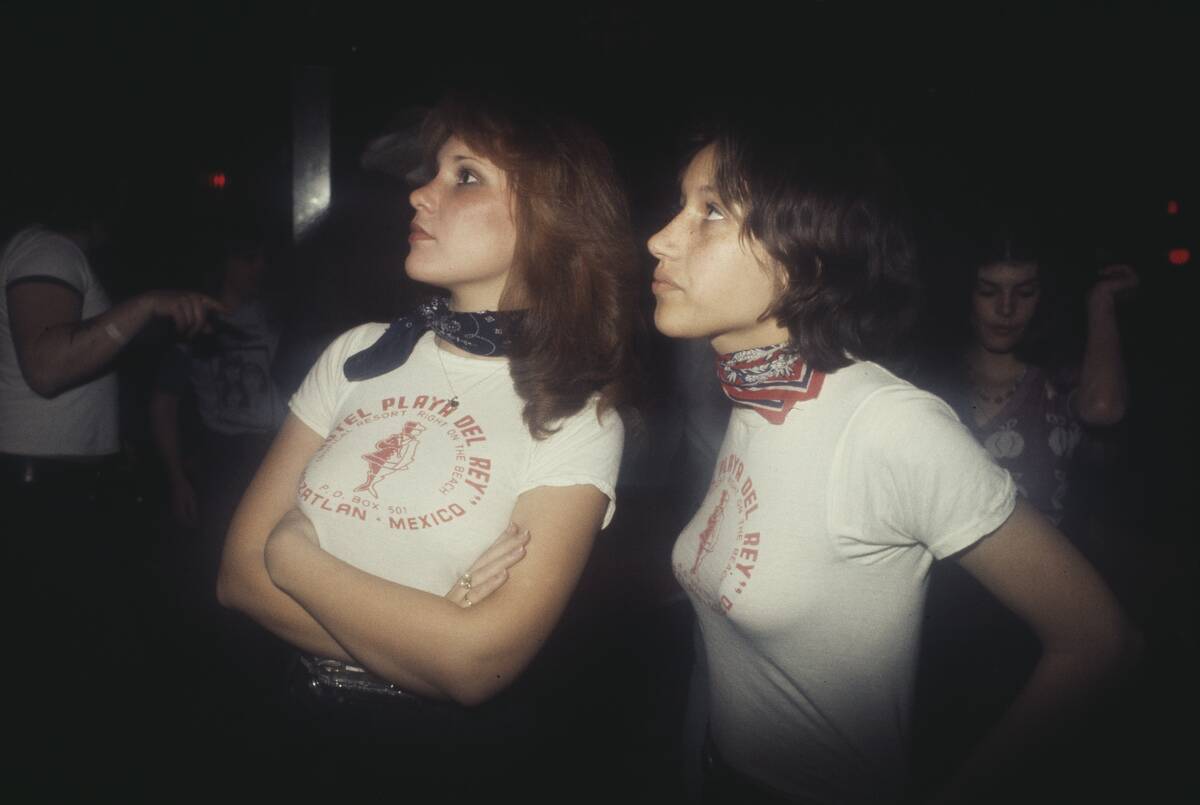
These two women were photographed at the Sunset Strip’s Whisky a Go Go, one of the most famous nightclubs of the era. Fashion at the Whisky was wide-ranging, often reflecting the band or artist that was performing on a given night.
The outfits on display here are simple, but still indicative of the era. The women are wearing tight-fitting graphic t-shirts along with neckerchiefs stylishly knotted around their necks.
Not all scenes were on the cutting edge.
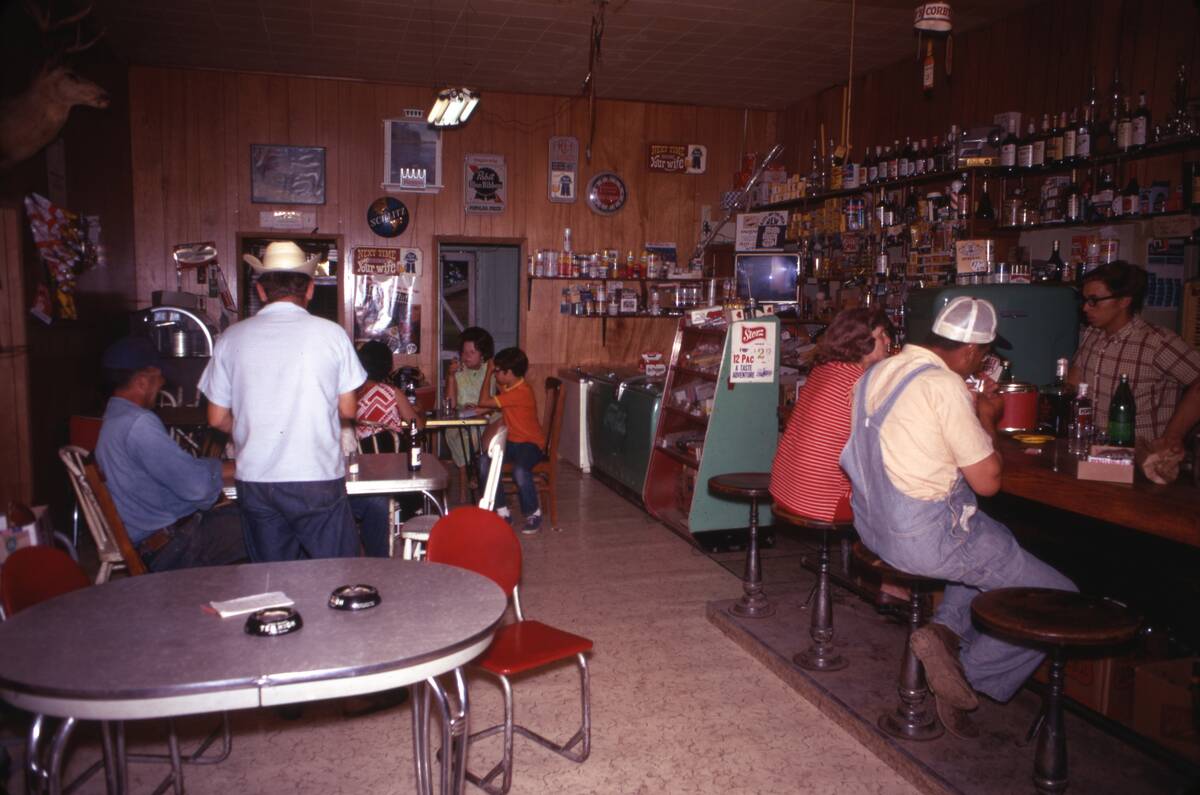
This fascinating image of a working-class bar somewhere in the midwestern United States shows that for many people, keeping up with the latest styles was not a concern.
For working-class people, practicality and comfort were important, which meant that durable blue jeans and overalls were standard wear. The working class aesthetic extended to rugged leather jackets, along with simple accessories like baseball caps.
Ski fashion remained hot.
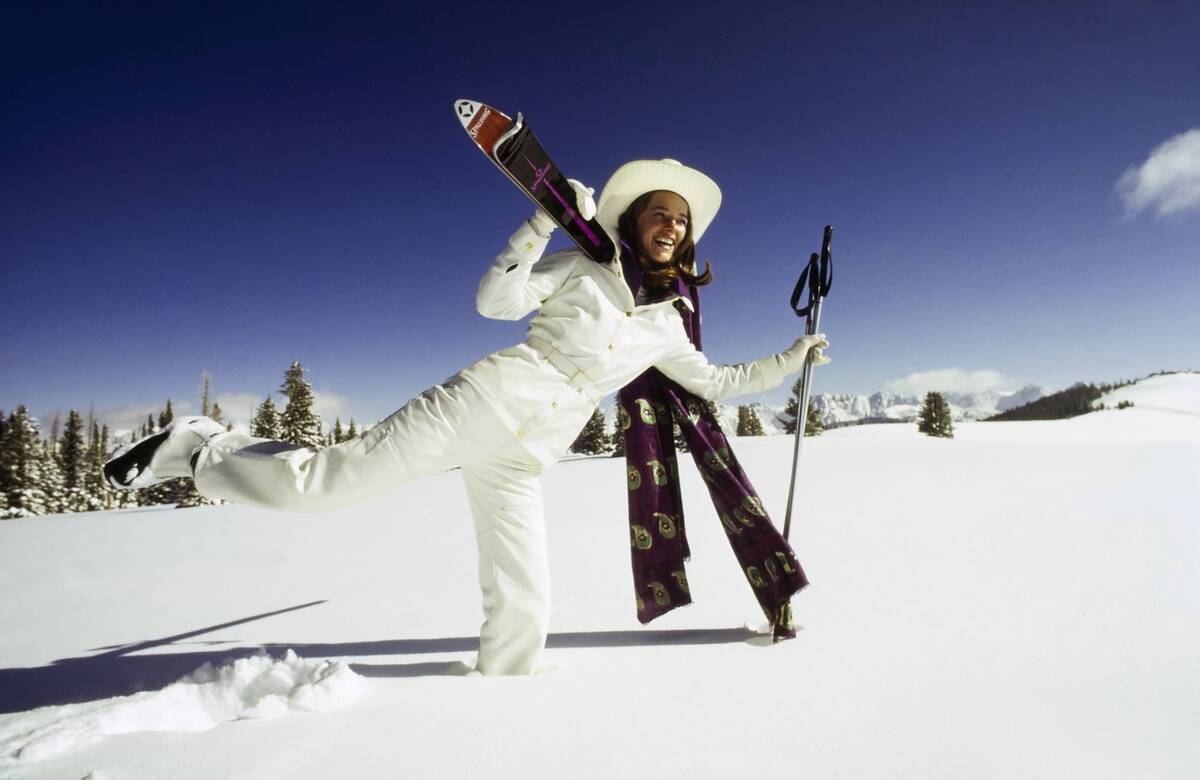
After ski fashion emerged in the ’50s and ’60s, fashion designers continued their momentum with vibrant ski outfits throughout the 1970s.
Actress Charlotte Rampling can be seen here, wearing a stark white ski suit while on vacation in Vail, Colorado. Synthetic fabrics like nylon and polyester proved to be perfect for skiing, as they were durable enough to withstand outdoor activities and were also easy to dye.
Punk fashion went mainstream.
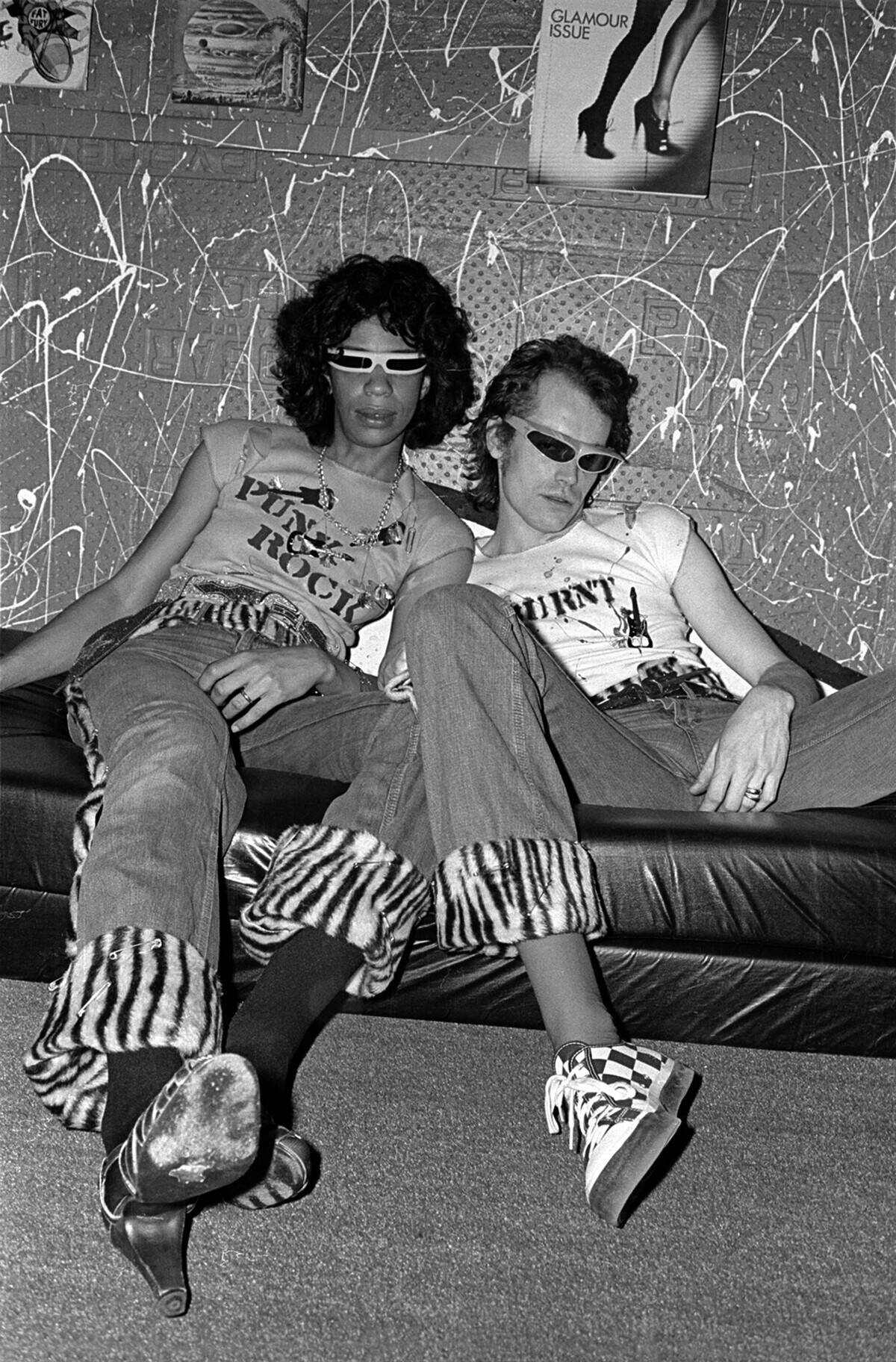
While punk rock started out as a narrow niche fandom, it exploded in the ’70s and became somewhat mainstream by the end of the decade.
Those firmly entrenched in the punk scene may have opted for studded leather vests, while others merely adopted some of the trappings of punk fashion. This stylish couple appears to be influenced by punk fashions of the late ’70s.
It was a colorful decade indeed.
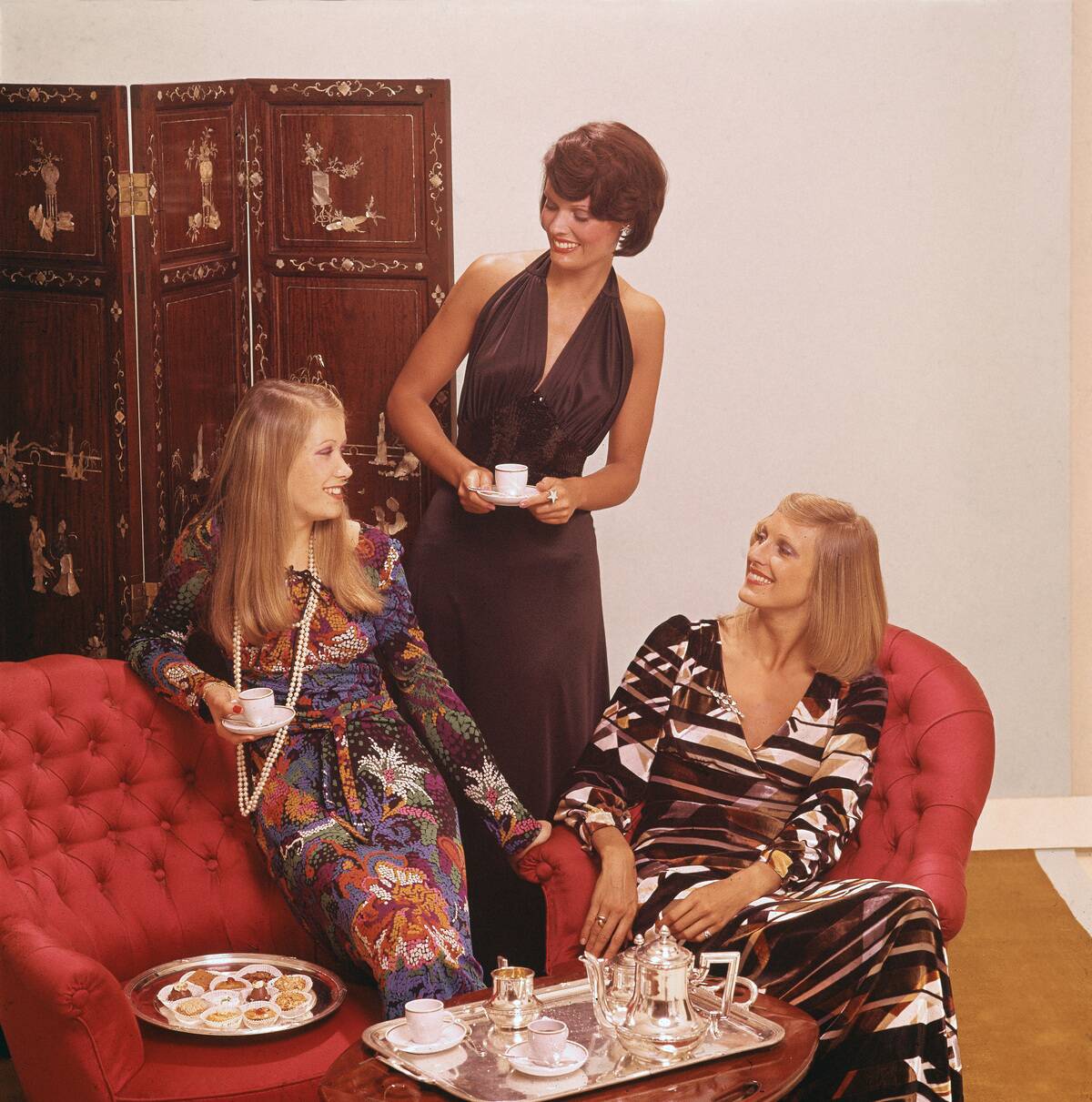
A variety of style influences combined to inform the patterns and designs seen on clothing in the 1970s. While the designs on these women’s outfits aren’t as psychedelic as ’60s designs, it’s still easy to see the influence.
Floral prints became immensely popular in the ’70s, often rendered in big, bold shapes. In this way, mainstream women’s fashion took on a decidedly bohemian look.
